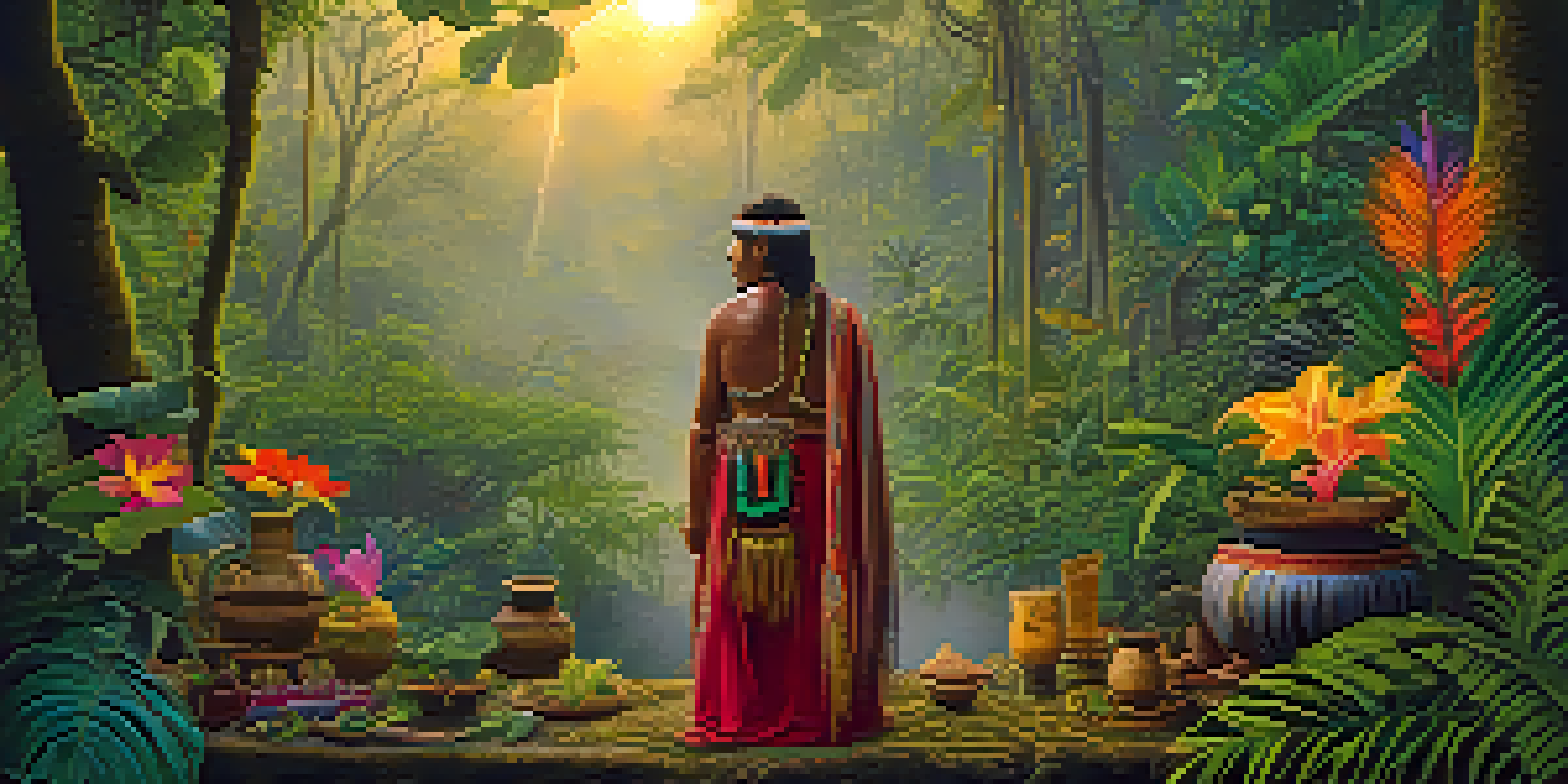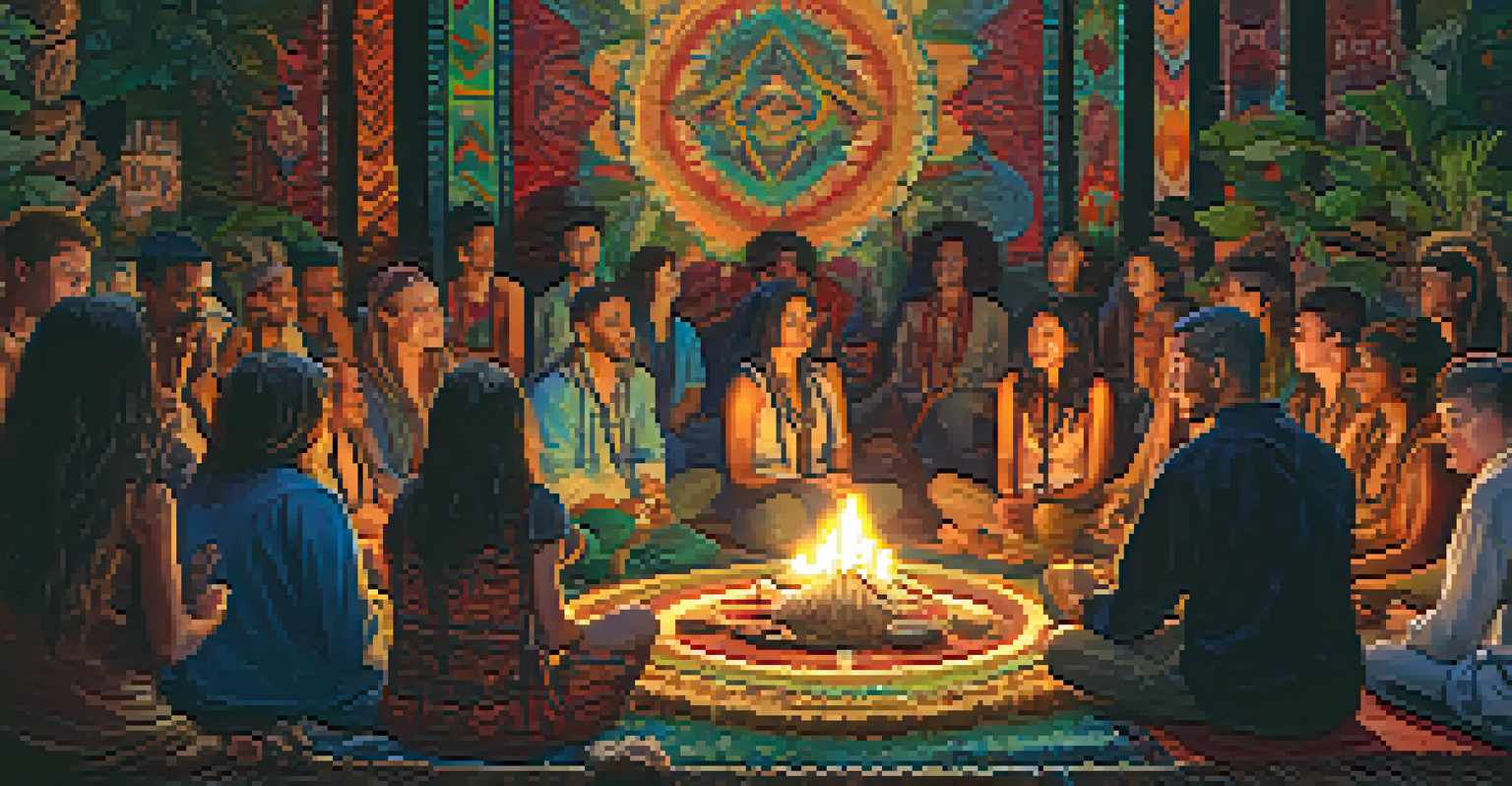Exploring Ayahuasca: A Journey Towards Personal Empowerment

What is Ayahuasca and Its Origins?
Ayahuasca is a powerful brew made from the Banisteriopsis caapi vine and other plant ingredients, traditionally used by indigenous cultures in the Amazon. Its origins trace back centuries, primarily among the indigenous peoples of South America, who have used it for spiritual and healing purposes. This sacred drink has recently gained popularity worldwide, thanks to its potential to provide profound insights into one’s psyche and life.
The greatest discovery of my generation is that a human being can alter his life by altering his attitudes.
The brew contains DMT (dimethyltryptamine), a naturally occurring psychedelic compound that creates intense visual and emotional experiences. When consumed, Ayahuasca is said to open the mind, allowing individuals to confront their fears, traumas, or unresolved issues. This transformative journey often leads to moments of clarity and self-realization, prompting many to seek it out for personal growth.
While Ayahuasca has become a symbol of personal empowerment, it’s essential to approach it with respect and understanding. The rituals surrounding its use, often led by experienced shamans, emphasize the significance of intention and preparation. This cultural context enriches the experience, making it not just about the substance, but also about the journey and the community.
The Personal Empowerment Aspect of Ayahuasca
Many individuals turn to Ayahuasca as a means of personal empowerment, seeking to unlock their potential and gain deeper insights into their lives. The experience can serve as a mirror, reflecting back areas in need of healing or change. Participants often report feeling a renewed sense of purpose and direction following their journeys, which can lead to significant life transformations.

Empowerment through Ayahuasca often involves confronting uncomfortable truths about oneself. This process can be challenging; however, the potential for growth is immense. By facing fears and emotional blockages head-on, individuals may emerge with a clearer vision of their goals and a stronger sense of self-worth.
Understanding Ayahuasca's Origins
Ayahuasca is a sacred brew from the Amazon, traditionally used for spiritual and healing purposes by indigenous cultures.
Furthermore, the communal aspect of Ayahuasca ceremonies fosters a sense of belonging and support. Sharing experiences with others who are on a similar journey can enhance feelings of empowerment, as participants realize they are not alone in their struggles. This connection can lead to lasting friendships and networks that encourage ongoing personal development.
Preparing for an Ayahuasca Journey
Preparation is key to maximizing the benefits of an Ayahuasca experience. Many facilitators recommend a period of dietary and lifestyle adjustments leading up to the ceremony, often referred to as 'dieta.' This can include avoiding alcohol, processed foods, and certain medications to ensure a safe and effective experience.
Healing doesn’t mean the damage never existed. It means the damage no longer controls our lives.
Mental and emotional preparation is equally important. Reflecting on one's intentions for the journey can help guide the experience and provide clarity. Journaling or meditating prior to the ceremony can facilitate this introspection, helping participants articulate what they hope to gain from the experience.
Lastly, it’s essential to find a reputable and experienced facilitator. The right guide will not only provide a safe environment but also offer support throughout the journey. Researching and connecting with others who have undergone Ayahuasca experiences can help ensure you choose a respected leader for your transformative journey.
What to Expect During an Ayahuasca Ceremony
An Ayahuasca ceremony typically begins with a group gathering where participants set intentions and share their thoughts. This communal aspect helps create a supportive atmosphere, which is crucial for the experience. The shaman or facilitator usually leads the ceremony, guiding participants through the process.
Once the brew is consumed, individuals may experience a range of effects, from intense visuals to deep emotional releases. It’s common to feel a sense of vulnerability, as the medicine works to uncover hidden aspects of the self. During this time, it’s vital to remain open and receptive to whatever emerges, as each journey is unique.
Empowerment Through Personal Growth
Many individuals seek Ayahuasca to confront fears and gain insights, leading to significant personal transformation.
The ceremony often includes music, singing, and other rituals that enhance the experience. These elements can help participants navigate their journey, providing comfort and grounding. As the night unfolds, many find themselves moving through cycles of joy, fear, and ultimately, acceptance, leading to profound insights and personal growth.
Integration: Applying Insights After the Journey
The experience doesn’t end once the ceremony is over; integration is a critical phase that involves applying insights gained during the journey into everyday life. Many participants find it beneficial to engage in discussions with others who have undergone similar experiences, as sharing can reinforce lessons learned.
Journaling is another effective tool for integration. Writing down thoughts and feelings can help clarify insights and serve as a reference point for future reflection. This practice encourages individuals to continue exploring their experiences, fostering ongoing self-discovery and growth.
Additionally, seeking support from therapists or coaches familiar with Ayahuasca can provide guidance during the integration process. These professionals can help individuals navigate the emotional and psychological shifts that may arise, ensuring a smoother transition back into daily life.
Potential Risks and Considerations of Ayahuasca
While Ayahuasca offers potential for personal empowerment, it’s crucial to recognize the risks involved. The experience can be emotionally and physically intense, sometimes leading to challenging revelations that require significant processing. Individuals with certain mental health conditions, particularly those related to psychosis, should approach with caution and consult a healthcare professional.
Furthermore, the setting and facilitator play a significant role in ensuring a safe experience. Not all ceremonies are conducted with the same level of care and respect for tradition. Researching facilitators, reading reviews, and seeking recommendations can help mitigate potential risks.
Importance of Preparation and Support
Effective preparation and finding a supportive community are essential for maximizing the benefits of an Ayahuasca journey.
Lastly, it’s essential to listen to your intuition. If something feels off about a ceremony or facilitator, trust that instinct. Personal empowerment begins with self-awareness and respecting one’s boundaries, ensuring a more meaningful and safe journey.
Finding Community and Support in the Ayahuasca Journey
One of the often-overlooked aspects of the Ayahuasca experience is the sense of community that can develop among participants. Many individuals find solace and support in sharing their experiences with others who have walked a similar path. This communal environment fosters healing and understanding, creating lasting connections.
Joining online forums or local groups dedicated to Ayahuasca can enhance the journey by providing ongoing support and resources. These communities often share insights, tips for integration, and personal stories, enriching the overall experience. Feeling part of a collective journey can validate individual experiences and reinforce personal growth.

Moreover, finding a mentor or guide who understands the nuances of the Ayahuasca journey can be invaluable. Their wisdom and experience can provide direction and reassurance, helping individuals navigate challenges and celebrate successes along the way.